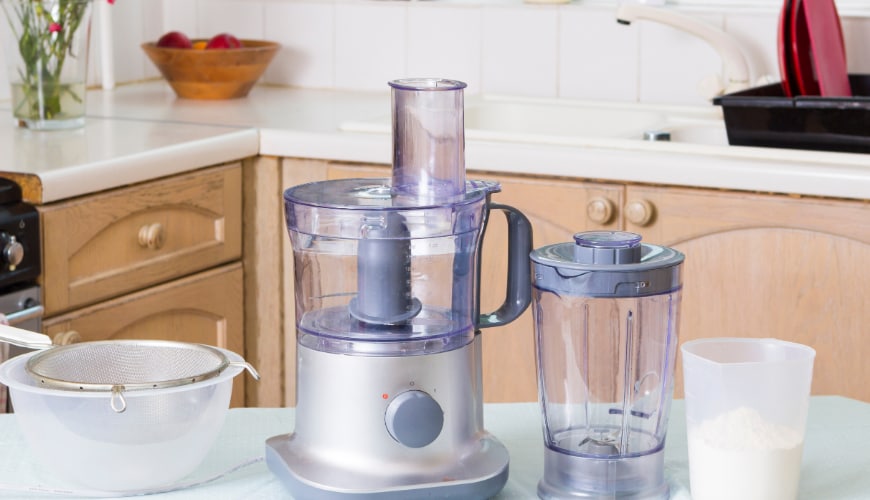Food Processor – A Kitchen Necessity?
Most chefs, cooks, and bakers will tell you that one of the most vital kitchen appliances they own is their food processor.
Machines may greatly vary in size and ability, but they are all efficient and reduce the time and energy that regular food preparation requires. One food processor can take the place of multiple machines and save the user from the constant repetitive action that some tasks require.
Please read on to find out if food processors are a kitchen necessity or something that we can easily live without. We have included a multitude of handy hints, a buyer’s guide, and maintenance tips.
What is a Food Processor?
Simply put, it is an electric mixing bowl that is fast, safe, and efficient to use. It is a versatile appliance for food preparation as it is capable of a multitude of things.
Chopping: Ideal for vegetables and fruits.
Slicing: Salads, vegetables, and fruits all evenly sliced in record time.
Shredding: Make the perfect coleslaw with this attachment.
Grinding: Suitable for coarse ingredients including meat and vegetables.
Beating: Smooth batter for cakes and pancakes.
Mixing: The simple way to combine a number of ingredients evenly.
Kneading: Take the hard work out of bread-making.
Pureeing: Not all models have this function, those that do are great for smoothies and juices.
The mixing bowl sits atop a motor and is operated via a power button and variable settings. Add multiple ingredients to the bowl and the blades will mix them to an even consistency. Dry ingredients mix equally as well as those with added liquid.
Using a food processor is a speedy way of making doughs, batters, soups, sauces, and hundreds of other things in between. The food processor does the job of several individual kitchen utensils so drastically reduces preparation and cleanup time.
How do Food Processors Work?
Take a look at a food processor, it doesn’t matter what make, and you will notice a heavy base unit with a clear plastic bowl above it. There will also be a lid with some kind of opening on it. Depending on the model, there will also be a variety of blades and beaters.
Here we will explain how everything works.
The heavy motor sits in the base and provides power to a vertical shaft. This is what rotates the blades.
Having the blades at the base of the bowl is to allow gravity to work. Heavier food is attracted to the blade, as it gets broken down it works its way to the outer edges of the mixing bowl.
All processors have a simple to operate power button. The blades stop immediately as the supply stops. This enables the user to check the ingredients, a flick of the switch turns the blades back on if they need a little more time.
The pulse function gives short intermittent bursts of power until the consistency is exactly as it should be. Each boost of power moves the ingredients around, ensuring anything unchopped gets near to the spinning blades.
Continuous mixing and pulsing will lead to the mixture becoming pulverized or pureed, particularly if you add more liquid.
Mixing bowls always heavy-duty plastic for durability. They are transparent so the user can supervise the mixing process without removing the lid. The side handle is convenient to give a good grip when emptying, carrying, or cleaning the bowl.
The funnel tube on the lid is a safe and easy way to add extra liquid or small ingredients without needing to stop mixing.
If you fit a slicing disc, the funnel is the tube to put cucumbers, carrots, etc., down to slice into uniform pieces. They will be collected in the mixing bowl creating little mess and now accidents to fingers!
The lid is vital to the food processor. Without it, ingredients, particularly icing sugar or corn starch, would fly around the kitchen!
What are The Different Blades on a Food Processor?
All food processors will have at least one standard blade fitted and an additional few that can be interchanged for different tasks.
The premium and dare we say, more expensive models are more likely to have multiple attachments to extend the functionality of the machine.
Knife/ multi-purpose blade
The blade fitted in all food processors with a wide range of uses. It can be used to mix, mince, mash, chop, and puree; a truly versatile blade.
Dough blade/hook
If your recipe calls for yeast then this is the attachment for you. It makes light work of kneading all doughs, sweet or savory. Basic machines usually include a blade and premium machines supply a hook.
Shredder/slicer blade
Again, varying on the model, this is the go-to blade for slicing food in varying thicknesses. The stainless steel discs are often reversible to double the amount of slicing styles. A slicing blade is capable of making skinny French fries and chunky chips.
Grating blade
This insert is useful for soft and hard cheeses and many vegetables. Often the grating blade is the weakest link in a food processor’s equipment.
Potato Rasp
If you need to grate something hard into tiny segments, this is the blade for that. It is ideal for nutmeg, parmesan cheese, potatoes, and coconut.
Whisk
These are paddle or beater style and are often made of tough plastic. This is the perfect utensil for whipping egg whites into stiff peaks. It has to be said, a food processor can struggle to reach the high-quality whisking results of an electric stand mixer.
Juicer/citrus press
These rarely come as stock equipment and may need to be bought separately. That still works out less expensive and more space-saving than buying a juicer.
Food Processor vs Blender – Do You Need Both?
A food processor is capable of blending and pureeing foods; a blender can’t knead dough nor chop cabbage. If you’re in the market for just one machine, then we would recommend opting for a food processor as it does the work of both machines, and then some.
There are 2 types of blender on a food processor.
The jug style
Remove the mixing bowl and replace it with the jug attachment. The base of the food processor becomes the power supply for the blender. This is the perfect way to make silky smooth soups, smoothies, and milkshakes. It is also ideal for purees and some models are capable of crushing ice.
The canopy attachment
This clever canopy sits in the mixing bowl and works in conjunction with the knife blade. The canopy prevents the ingredients from moving around the bowl and ensures a smoother result. The canopy is a great idea for those with limited kitchen space, there is no separate large jug to store.
The Buyer's Guide – Which Food Processor Should I Choose?
A handy guide to the features of the best food processors
POWER
To enable you to speed through your food preparation you should consider a food processor with high wattage. As long as you choose a model with 600w or more you will have more than enough power for any task.
SIZE AND WEIGHT
Food processors aren’t small so ensure you have enough cupboard staff if you are going to put it away between uses. They are also heavy so be aware that you will need to have eaten your spinach eat time you need to move it. If you are going to display your processor on the countertop, make sure there is enough clearance beneath the cabinet.
EASE OF USE
The food processors haven’t been over complicated. They should have a power button for constant mixing, and a pulse button for intermittent blitzing. That is all they need. Instructions should be clear and concise and fitting accessories and blades should be a safe and simple operation.
CAPACITY
2-liter machines are ideal for batch-cooking and larger families, anything less should only be considered for occasional use for smaller groups. To knead enough dough for a full-size loaf of bread, we recommend a 2-liter machine.
ACCESSORIES
The more add-ons that are supplied with your food processor, the more versatile it can be. Look for models with multiple blades and hooks, mini-bowl for chopping small amounts, blending jugs, and storage tubs. The premium range models usually come with a wider range of utensils.
WIDE FEEDING FUNNEL
This will allow you to pass larger pieces of food, whole onions, or potatoes through at any one time. This will speed up food preparation time, giving you more time to do something else.
HOW EASY IT IS TO CLEAN
We would urge you to go for a model with as many dishwasher compatible parts as possible. If you haven’t got a dishwasher, ensure you can submerge each part in water. Trying to wipe down a food processor can be quite a fiddly task. Always strip off any loose parts and wash and dry those separately. The main body should then be easier to clean.
WARRANTY
An expensive product with a good warranty means the company believes in the appliance and will back it. If they have great faith in it, you should too.
COST
With prices that vary from a few dollars to in excess of $400, we suggest that you set a budget and find the most efficient machine within that price limit.
Common Mistakes when Using a Food Processor
Although the machine is easy to set-up and to use, there are a few basic rules to follow to ensure you get the best from your food processor.
Hot ingredients may degrade the quality of the mixing bowl and blades. Always use cold or lukewarm foods for the best results.
Do not be tempted to overfill the bowl, you will slow the process down and possibly jam the blades. We recommend cooking large batches in 2-separate lots. Don’t pour liquid past the fill line, you will end up with leakages and a messy machine and kitchen.
Always attach the bowl to the base unit before filling it. This way the blades remain in the perfect position to move freely.
Trying to put large chunks of foods can cause harm to the blades and possibly burn the motor out. Take a little time to cut things into smaller chunks, particularly coarse foods, before you add them to the mix.
Finely chopping small ingredients such as herbs and garlic can be tricky. Nuts are notoriously difficult as they soon turn into butter if processed for too long. Instead, use the pulse feature and give a few short bursts until they are chopped finely enough.
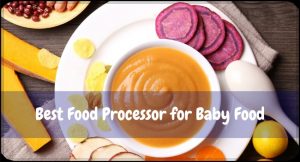 Your baby’s first taste of solid food is an exciting time and one that new parents want to get right.
Your baby’s first taste of solid food is an exciting time and one that new parents want to get right.
A food processor is the ideal piece of kitchen equipment for making yummy, lump-free food to get your little one on the right road.
If you are investing in a food processor solely for the purpose of making baby food, you may well be better off buying a mini-processor, or a blender. Both of these are far cheaper.
If you want to make baby food and use the appliance for other kitchen tasks, most brands will suit the job. You need to be able to puree food, or as the baby gets older, mash it down to a slightly more chunky consistency.
Some models include a steamer, reheat, and defrost function. This is ideal if you choose to batch cook and freeze portions. However, these machines are usually the most expensive.
There are many benefits to using a food processor for baby food, mainly because you are making healthy, natural foods. You know exactly what is in the food, you can experiment with flavors, and you can save a lot of money against store-bought jars and packets. Preservative-free food that is quick and easy to make has to be the way to go.
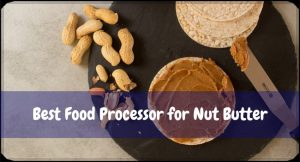 Almost everyone loves peanut butter but it can be calorie-laden, expensive, and packed with preservatives.
Almost everyone loves peanut butter but it can be calorie-laden, expensive, and packed with preservatives.
Making nut butter at home is not only affordable, but it is also very quick and easy to do in a food processor.
Most machines are capable of making it as you need is the multi-purpose blade that models are supplied with.
Almost everyone loves peanut butter but it can be calorie-laden, expensive, and packed with preservatives.
Making nut butter at home is not only affordable, but it is also very quick and easy to do in a food processor.
Most machines are capable of making it as you need is the multi-purpose blade that models are supplied with.
Roasted peanuts must be used. Chop them for around 3-minutes to create a fine grind, add a little peanut oil, a spoon of honey, and a pinch of salt to taste divine. For a crunchier butter, reduce the chopping time.
Similarly, any tree-grown nut can be used. Walnut, pecan, and almond make delicious butter just as quickly.
They are a healthier alternative to regular butter and you can add ingredients to taste.
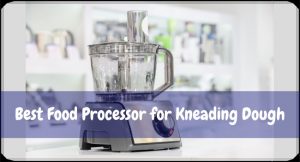 Almost everyone loves peanut butter but it can be calorie-laden, expensive, and packed with preservatives.
Almost everyone loves peanut butter but it can be calorie-laden, expensive, and packed with preservatives.
Making nut butter at home is not only affordable, but it is also very quick and easy to do in a food processor.
Most machines are capable of making it as you need is the multi-purpose blade that models are supplied with.
Almost everyone loves peanut butter but it can be calorie-laden, expensive, and packed with preservatives.
Making nut butter at home is not only affordable, but it is also very quick and easy to do in a food processor.
Most machines are capable of making it as you need is the multi-purpose blade that models are supplied with.
Roasted peanuts must be used. Chop them for around 3-minutes to create a fine grind, add a little peanut oil, a spoon of honey, and a pinch of salt to taste divine. For a crunchier butter, reduce the chopping time.
Similarly, any tree-grown nut can be used. Walnut, pecan, and almond make delicious butter just as quickly.
They are a healthier alternative to regular butter and you can add ingredients to taste.
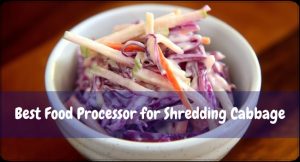 Homemade slaw at a family party or backyard barbecue is the perfect side dish to many meals. Using a knife or grater can seem to take forever, and often result in cut fingers or knuckles. Using a food processor is the best way to speed the process up, safely!
Homemade slaw at a family party or backyard barbecue is the perfect side dish to many meals. Using a knife or grater can seem to take forever, and often result in cut fingers or knuckles. Using a food processor is the best way to speed the process up, safely!
You will need the shredding blade for your machine. It is a metal disc with a blade. A wide food tube works well with cabbage as you won’t have to spend so much time cutting it into pieces.
Once you have attached the circular blade and put the lid on, you will need to cut the cabbage into manageable pieces.
Halve it, cut the core out, and section it into chunks that will fit in the food tube. Place them inside, turn the power on, and using the food pusher, force the cabbage down towards the bowl. That is it. An entire cabbage shredded in a matter of seconds with no mess.
Be adventurous, the food processor can shred all sorts of fruits and vegetables to impress your friends with tasty slaw. A favorite of ours is red cabbage, pear, carrot, with a good squeeze of lemon juice.
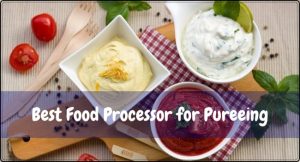 There are many reasons why we need to puree foods, sometimes for babies or dietary requirements, some sauce or pudding recipes need to be pureed. Our favorite use is to puree vegetables as the base for soups and pasta sauces. The best way to do this is with your food processor.
There are many reasons why we need to puree foods, sometimes for babies or dietary requirements, some sauce or pudding recipes need to be pureed. Our favorite use is to puree vegetables as the base for soups and pasta sauces. The best way to do this is with your food processor.
For the best purees use ripe and fresh vegetables. Cook them first to soften them, boiling or steaming will do the trick.
Place them in small amounts in the machine and mix them with the knife blade until you achieve the perfect texture.
Any food processor can achieve this with the multi-purpose attachment. It doesn’t need a large motor or capacity as you will have pre-softened food in small amounts.
Trying to puree large batches in one go might leave you with an uneven consistency and lumps.
Caring and Maintaining a Food Processor
Food processors are expensive so taking good care of them should help them to have a long service life.
- Only use foods recommended, do not put the motor under needless pressure.
- Cut any ingredients into manageable sizes.
- Do not overfill or let the liquid pass the maximum line.
Cleaning a food processor
Some models have an Auto-clean function, for those that don’t, here are some handy tips
- After every use, disassemble any parts, including the blade, and wash them thoroughly in soapy water. All of these components, excluding the blade, can be washed on the top rack of the dishwasher. Remember not to use abrasive cloths when hand washing.
- Wipe the power unit with a damp cloth.
- A nylon scrubber is suitable for any stuck-on food debris.
- A solution of baking soda and water left to soak can help to remove stubborn odors.
- Thoroughly dry every part before reassembling. Moisture invites bacteria, that’s never a good thing in a food preparation appliance.
The blades may need to be oiled occasionally. Follow the instruction manual and use a good-quality, food-grade oil.
And finally,
A food processor can be an amazing aide to busy, adventurous cooks and save huge amounts of preparation time. Invest in a robust model, that will last for years and improve your recipes and your food presentation.
Although the initial set-up and cleaning can be a little awkward, you will be repaid a thousandfold, and your versatile food processor will soon become your go-to kitchen gadget.
Read More Reviews

